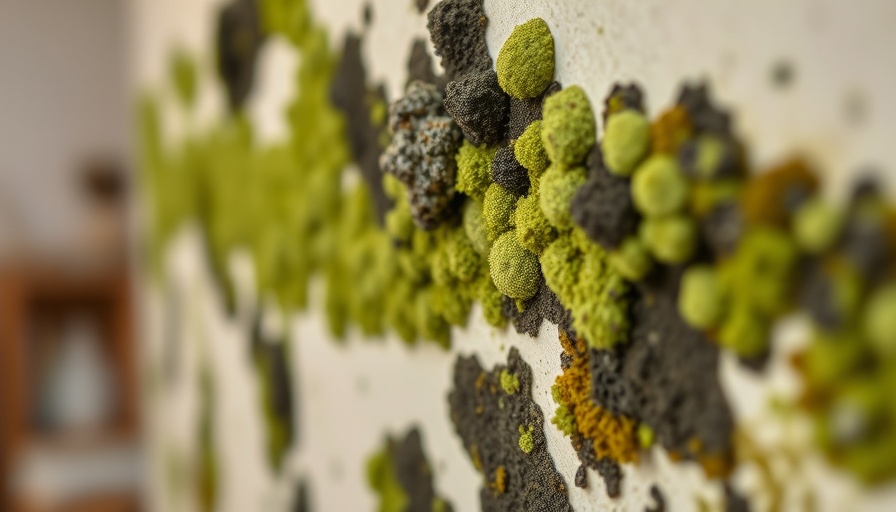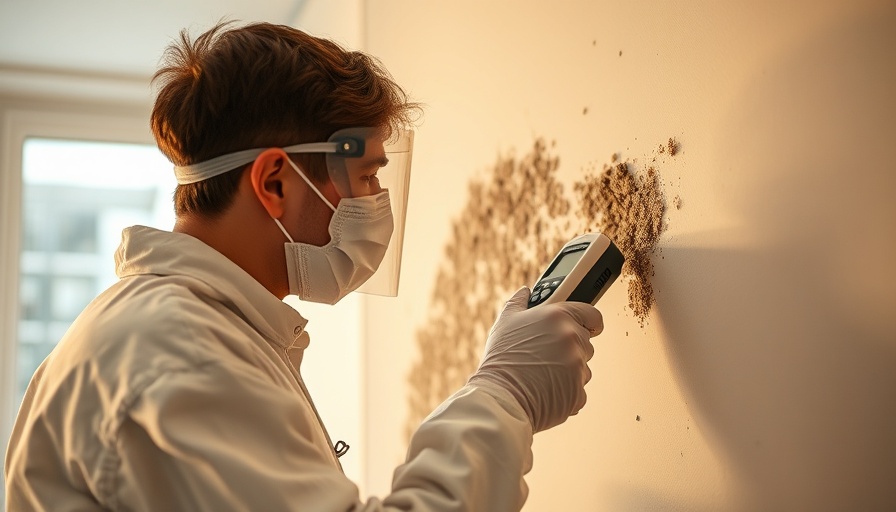
The Hidden Threat of Mold in Portland Homes
Mold is more than a mere nuisance in Portland; it can pose significant health risks, particularly in homes where moisture is prevalent. The damp climate of the Pacific Northwest creates the perfect environment for mold growth, making it imperative for homeowners, renters, and landlords to understand what they are up against. Recognizing the hidden dangers of mold is essential not only for preserving your home but also for safeguarding your family's well-being. This article aims to provide an extensive mold inspection checklist while highlighting the importance of effective moisture control strategies.
The Health Impacts of Mold: What You Need to Know
Mold is a type of fungus that reproduces through tiny spores invisible to the naked eye. Say these spores land on a moist surface, they can multiply exponentially, particularly in warm conditions. In places like Portland, with its rainy winters, homeowners are often unaware of the types of mold that can flourish in their homes, such as Aspergillus, Penicillium, and Stachybotrys, commonly known as black mold.
Exposure to mold can lead to various health issues, ranging from respiratory problems and allergic reactions to more severe conditions affecting the neurological system. If you or your family members experience symptoms like sneezing, coughing, or skin irritations, it could well stem from mold exposure. It's crucial to recognize these health risks as the first step toward an effective mold prevention strategy.
Mold Growth Conditions in Portland
Understanding the conditions that encourage mold growth in your home is key. The two primary ingredients are moisture and poor ventilation. Common sources of excess moisture include leaky roofs, damp basements, and issues caused by flooding. Bathrooms, kitchens, and laundry rooms are high-risk areas due to their naturally high humidity levels. To combat mold, homeowners should regularly check these areas for moisture and signs of mold growth.
Inadequate ventilation is often overlooked, as it can trap moisture inside the home. It's advisable to ensure that bathrooms and kitchens are equipped with exhaust fans and that vents are not blocked. Incorporating dehumidifiers in moisture-prone areas can drastically reduce the likelihood of mold developing, thereby improving the air quality in your home.
Mold Inspection Essentials: Tools for the Task
When it comes to mold inspection, having the right tools and knowledge can make all the difference. Homeowners should consider using moisture meters to detect hidden humidity levels within walls or ceilings, where mold might be lurking out of sight. Inspectors will often conduct a thorough visual assessment of all moisture-prone areas, including attics, crawl spaces, and air conditioning systems.
Professional services generally utilize air quality testing to identify the concentration of mold spores in the air, which provides further insights into whether mold is affecting the indoor environment. If mold is identified, samples may be sent for laboratory analysis to determine the specific type, which is crucial for remediation efforts.
Planning for a Mold Inspection
Preparing your home for a mold inspection is essential for a thorough evaluation. Begin by decluttering areas at risk of mold growth, such as basements and under sinks, allowing inspectors full access to those critical spots. Document any particular area where you've noticed unusual odors or signs of moisture—it will help guide the inspector's focus and streamline the assessment.
It is also recommended to ensure your utilities are operational, providing inspectors with electricity and water needed for moisture testing. Pets should be kept away during the inspection to avoid distractions and ensure safety for all parties involved. Homeowners should take steps towards proper ventilation before the inspection, decreasing humidity levels and any odors that may interfere with the assessment.
After the Inspection: Next Steps
Once the inspection is complete, it’s crucial to review the report generated by the inspector. This report typically includes findings such as moisture level readings, potential mold-infested areas, and recommendations for addressing the problem. If remediation is necessary, arrange for professional help promptly to mitigate further mold growth, as delays can lead to more severe health and property issues.
Preventing Mold in the Future
Prevention remains the best approach when it comes to mold. Regular inspections and maintenance activities can go a long way in keeping mold at bay. Consider implementing routine cleaning of your home’s ventilation systems, fixing leaks as they arise, and utilizing exhaust fans while cooking or showering to minimize humidity. Incorporating these practices into your home maintenance routine will greatly reduce the chances of mold establishing itself.
Empower Your Portland Home Maintenance with Knowledge
Understanding how to recognize and address mold growth can empower you as a homeowner. The cost implications of ignoring mold issues can be significant, not only in repairing the damage but also in potential health costs associated with mold exposure. By developing a comprehensive inspection routine and remediation plan, you'll help create a safe and healthy home environment.
If you're concerned about mold in your home, take action now to inspect and mitigate potential risks. Prevent the hidden dangers of mold before they cause harm to your loved ones and property. Your health and safety depend on your ability to stay vigilant against these threats.
 Add Row
Add Row  Add
Add 




 Add Row
Add Row  Add
Add 

Write A Comment